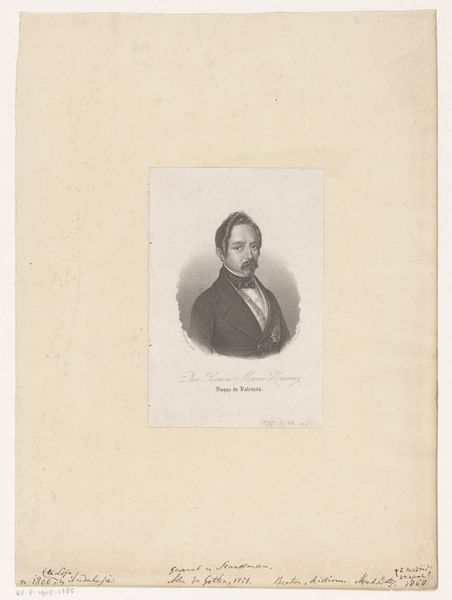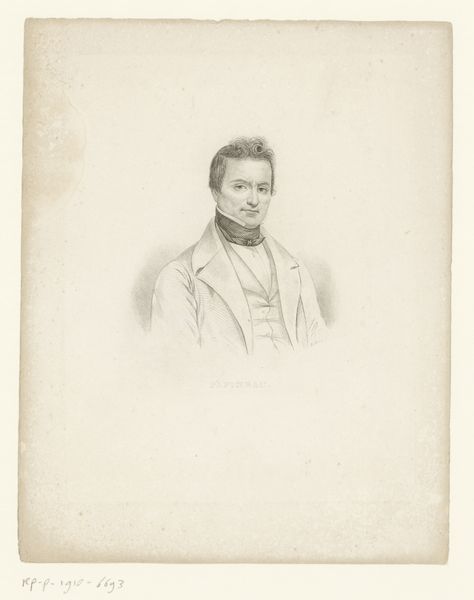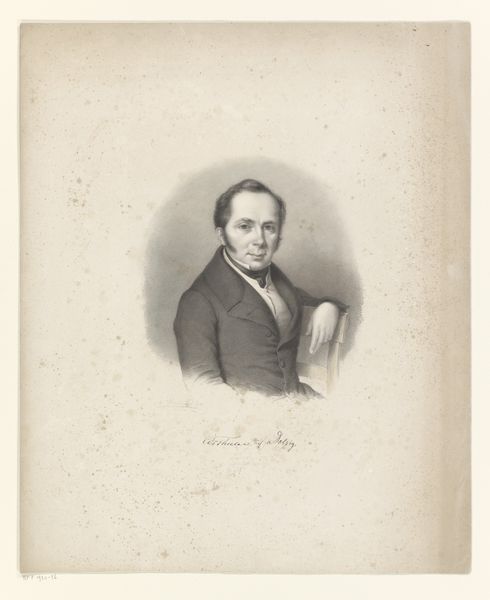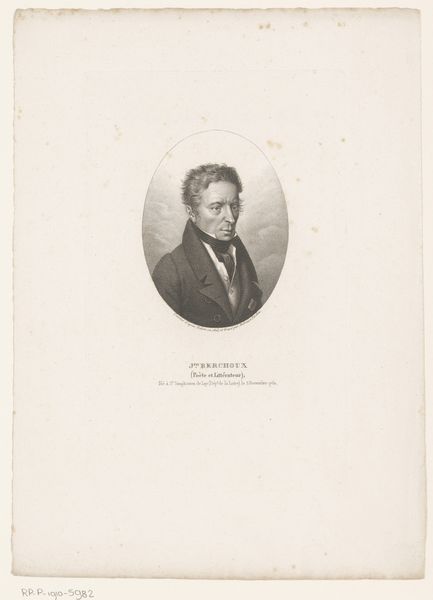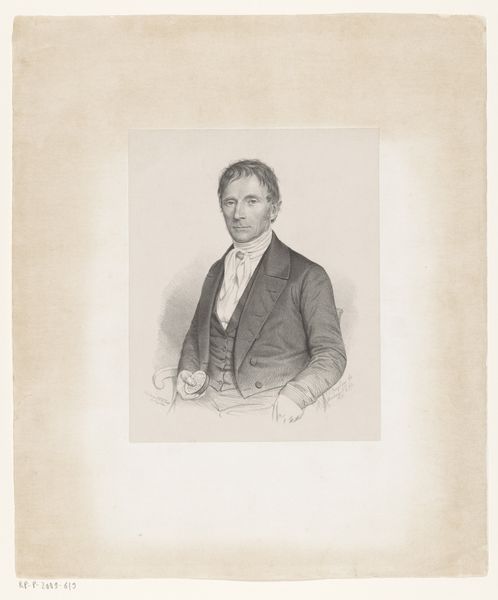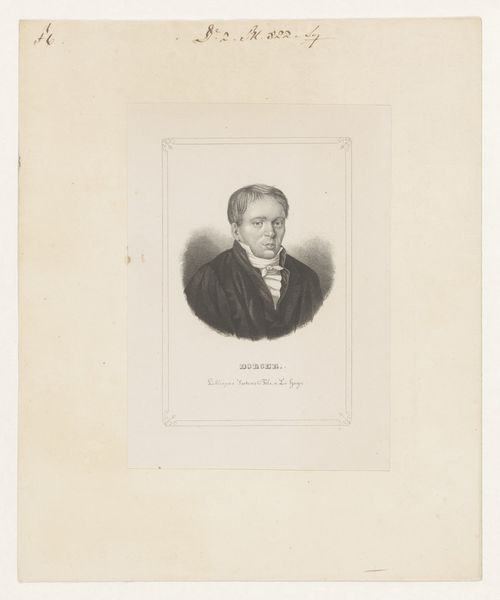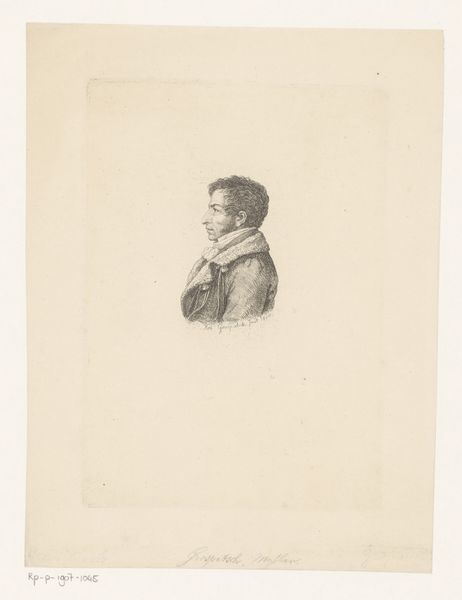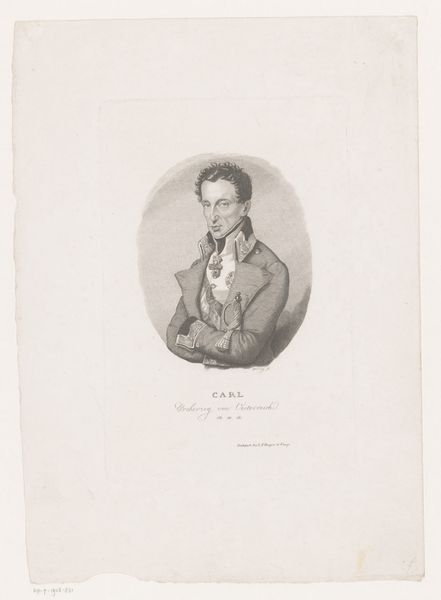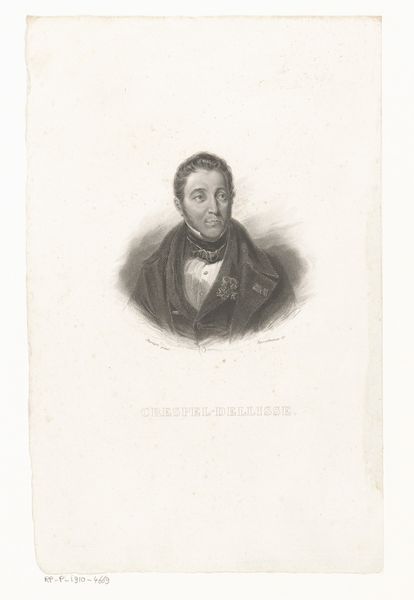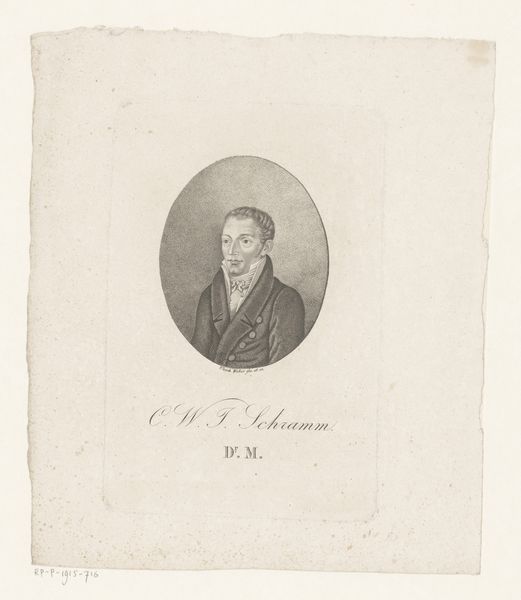
Dimensions: height 151 mm, width 122 mm
Copyright: Rijks Museum: Open Domain
This is Joseph Schubert’s portrait of Casimir Delavigne. It's a lithograph, a printmaking process using a stone or metal plate with a smooth surface. The image emerges through a chemical reaction: the artist applies a greasy medium to the plate, which then attracts ink, while the non-image areas repel it. Schubert masterfully controls this process, creating subtle gradations of tone that give Delavigne's face a lifelike quality. Lithography, developed in the late 18th century, democratized image production. Unlike earlier, more laborious printmaking methods, lithography allowed for relatively quick and inexpensive reproduction. This had a major impact on visual culture, enabling the mass dissemination of images and information. In this context, Schubert's portrait speaks to the rise of a media-driven society, where images could circulate widely, shaping public perception and celebrity. It exemplifies how technological advancements in craft intersect with broader social and economic forces. The lithograph challenges traditional notions of artistic value, reminding us that meaning resides not only in the image itself, but also in the processes of its making and distribution.
Comments
No comments
Be the first to comment and join the conversation on the ultimate creative platform.
